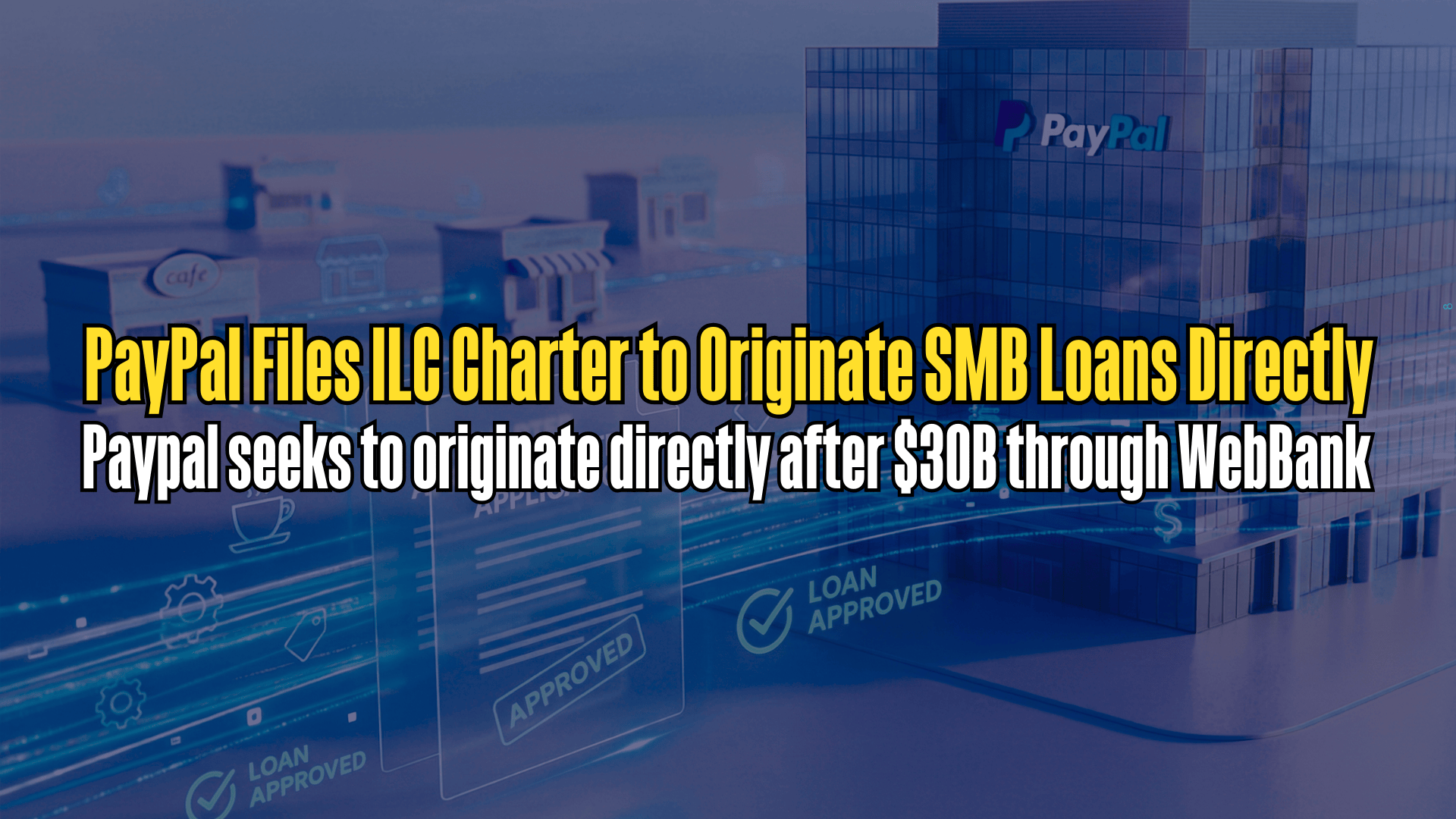Capital One announced its intention to acquire Discover in February 2024, with the deal receiving final regulatory approval in April 2025 from the Federal Reserve and the Office of the Comptroller of the Currency. Under the agreement, Discover shareholders received 1.0192 Capital One shares for each Discover share, representing approximately a 26% premium from Discover's closing price at the time of announcement.
The combined entity now ranks as the eighth largest bank holding company in the United States with total assets of $638 billion. More significantly, the merger creates the largest credit card issuer in the U.S. by loan volume, surpassing industry giants JPMorgan Chase and Citigroup.
Payment Network Acquisition
One of the most valuable aspects of this acquisition is Capital One gaining control of Discover's payment network—one of only four in the United States. This gives Capital One independence from the Visa-Mastercard duopoly and allows it to generate greater revenues from interchange fees. The company plans to move approximately a quarter of its 100 million cardholders to the Discover network.
Source: nasdaq.com
Regulatory Advantage
The acquisition provides Capital One with a significant regulatory advantage. The 2010 Durbin Amendment, which caps interchange fees on debit cards for large banks, only applies to open networks like Visa and Mastercard—not to proprietary networks like Discover and American Express. This exemption could allow Capital One to offer cash-back rewards on debit cards, creating a competitive edge over other major banks.
Market Position and Competition
The merger positions Capital One to better compete with financial giants like JPMorgan Chase, Citigroup, and Bank of America. According to some analysts, the combined entity could help break the Visa and Mastercard "duopoly" in payment processing.
Capital One's stock has shown positive performance in anticipation of the deal, with shares returning 10% for 2025 as of mid-May, while the KBW Bank Index showed a return of just 2.8% year-to-date. Analyst Sanjay Sakhrani from Keefe, Bruyette & Woods has projected earnings-per-share of $22.42 for Capital One post-merger, with potential for "$30 of EPS power" by 2027 depending on cost synergies and other factors.
Source: marketwatch.com
Potential Impact on Alternative Business & MCA Lenders
1. Increased Market Power and Competition for Small Business Lending
- The combined entity becomes the largest U.S. credit card issuer and a top-10 bank by assets, with significant resources and a vast customer base.
- This scale enables Capital One-Discover to expand their small business lending products, potentially including new credit card offerings, business loans, and possibly relaunching Discover’s small business credit cards.
- Alternative lenders and MCA providers may face stiffer competition if the merged bank leverages its data, technology, and distribution to offer faster, more attractive lending products to small businesses.
2. Potential Squeeze on Merchant Fees
- Capital One’s ability to shift card volume from Visa/Mastercard to the Discover network could alter the economics of payment processing for merchants.
- If the new entity uses its scale to negotiate lower interchange fees or introduces new fee structures, it could impact the margins of alternative lenders and MCAs that rely on merchant transaction flows for underwriting and repayments.
- However, some critics warn the merger could give Capital One-Discover more power to increase fees for merchants, which could indirectly raise costs for MCA providers and their clients.
3. Vertical Integration and Data Advantage
- The merger creates vertical integration between credit card lending, payment networks, and debit transactions.
- With access to a larger pool of merchant transaction data, Capital One-Discover could enhance credit risk models and offer more competitive, data-driven lending products to small businesses—potentially undercutting alternative lenders who lack such data depth.
4. Impact on Underserved and Subprime Borrowers
- Critics argue the deal could reduce options and increase costs for non-prime and underserved business owners, as market concentration rises and competition diminishes.
- Conversely, some analysts believe the combined company may introduce more inclusive products (such as fee-free checking and rewards debit cards) that could attract previously underserved small business owners, potentially reducing the addressable market for alternative lenders.
Summary Table: Effects on Alternative Business and MCA Lenders
Alternative business lenders and merchant cash advance providers may face heightened competition and pricing pressure as Capital One-Discover leverages its expanded scale, data, and network integration. The ultimate effect will depend on how aggressively the new entity pursues small business lending and how regulators address concerns over market concentration and merchant fees.
For now, Capital One has indicated that customer accounts and banking relationships remain unchanged, but the long-term strategic direction of the combined entity will likely become clearer in the coming months.
Our Opinion
Small business lending is about to get way more competitive. Capital One already has a decent SBA program, and now they've got Discover's merchant relationships. This move directly challenges alternative business lenders, signaling a significant shift in the market.
Discover's merchant network combined with Capital One's lending appetite creates a formidable competitor in the merchant cash advance space. They can now offer integrated payment processing + lending solutions that many alt lenders rely on third parties to provide.
Both companies have been expanding their small business lending. This merger creates another mega-player competing directly with alternative lenders for the same customers, with deeper pockets and lower cost of capital.
The combined entity will have unprecedented visibility into merchant transaction flows AND consumer credit behavior. That's gold for underwriting - something alt lenders have been fighting for access to.
While alternative lenders face intense scrutiny over rates and practices, traditional banks get to merge into payment monopolies with regulatory blessing. This creates an uneven playing field that alternative business lenders need to understand.
Headlines You Don’t Want to Miss
Kris Roglieri COO Pleads Guilty in Ponzi-Style Scam
Christopher Snyder, former COO of Prime Capital Ventures and associate of Kris Roglieri, pleaded guilty to wire fraud conspiracy for operating a $200+ million advance fee fraud scheme that collected upfront payments from clients seeking large credit lines, including $5 million from one client promised a $100 million line of credit. The scheme operated as a Ponzi-style operation, misappropriating client funds for personal luxury purchases and using new client money to pay previous victims, while Roglieri remains jailed facing multiple wire fraud charges.
Acrisure’s $2.1B Capital Raise and $32B Valuation
Acrisure, a Grand Rapids-based fintech company, has raised $2.1 billion in new funding led by Bain Capital, pushing its valuation to $32 billion and representing a nearly 40% increase from three years ago. The company, which has grown from $38 million to nearly $5 billion in revenue over eleven years through over 900 acquisitions, plans to use the capital for strategic M&A and expanding its technology-enabled financial services platform targeting small- and medium-sized businesses.
Visa Unveils Programme for Smoother Fintech Integrations
Visa launched a new API program that promises to cut 18-24 months off fintech integration timelines, which could significantly reduce costs and speed up product launches for alternative lenders expanding into embedded finance or B2B payments. While the announcement lacks crucial details about pricing and risk management features that matter most to lenders, it represents a meaningful infrastructure development that could impact competitive positioning and partnership strategies in the alternative finance space.












.png)